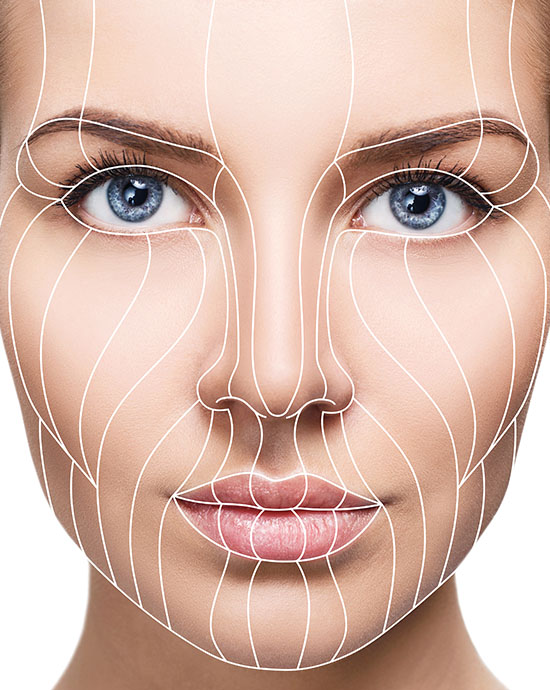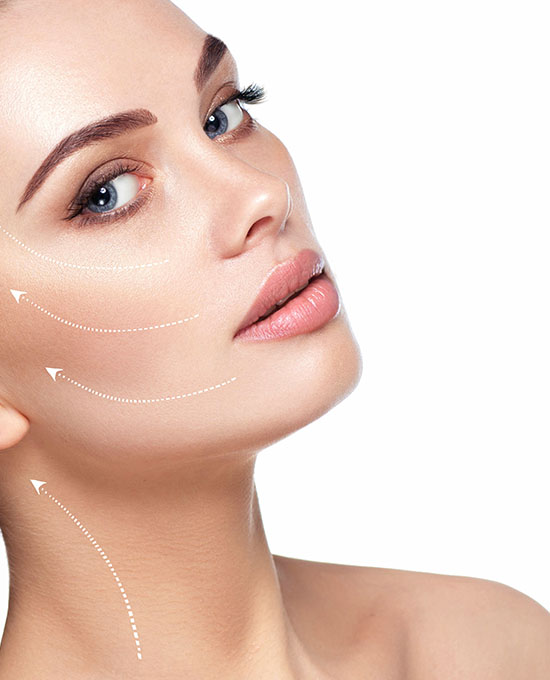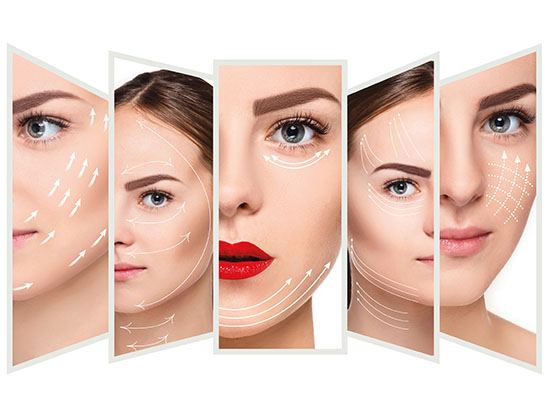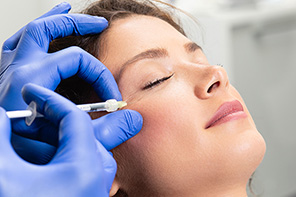
Facelift Operation in Turkey
Facelift is a plastic surgery to make the face appear younger. Thanks to this process, ridges or folds on the skin on the cheeks, jaw and other facial changes that occur with age are eliminated. During the facelift, the skin of the cheeks is pulled back, and the subcutaneous tissue is surgically changed to make the facial structure look younger. The excess skin is removed after determining the final shape. A neck lift is often performed as part of a facelift to reduce fat and slack skin on the neck.
The facelift operation which can improve the appearance, and quality of the skin, is successfully performed in Turkey.

When Should a Facelift Be Performed?
Over time and for many natural causes associated with aging, facial appearance changes. Skin becomes less elastic, and fat decreases in some areas of the face and increases in other areas.
Changes that can be eliminated by facelift include:
- Cheeks sagging,
- The increased skin at the bottom of the jaw,
- The increased skin in the nasal and oral area,
- Skin sagging and excess fat in the neck.
The facelift is not a solution to skin surface wrinkles, sun damage, wrinkles around the nose, upper lip, or irregular skin tone.

Facelift can cause complications. Some can be avoided with proper care, medications or surgical intervention. Long-term or permanent complications, though rare, can cause significant changes in appearance.
Possible Risks
Blood clotting: The presence of blood clots under the skin due to swelling and pressure are the most common complications of facelift. Blood clottings usually occur within 24 hours of surgery, and surgical intervention must be done immediately to prevent damage to the skin and other tissues.
Scars: Scars that occur after a facelift are permanent but are usually hidden by the natural bristles of the face and ear. In rare cases, cracks can lead to red scars. Corticosteroid injections or other treatments may be used to improve scars.
Hair loss: You may experience temporary or permanent hair loss near the location of the cracks. Permanent hair loss can be treated by performing a hair transplant procedure to implant hair follicles. Like any other type of operation, facelift has a risk of bleeding, infection and a negative reaction to anesthesia. Some habits can also increase the risk of complications such as:
- Blood transfusions or supplements,
- Some medical cases,
- Smoking,
- Changes in weight.

Before the facelift operation in Turkey, first, you will talk to your surgeon about facelift. The visit is likely to include:
Medical history and tests: Prepare to answer questions about your previous medical history, previous surgeries, complications of previous surgery, history of smoking and drug or alcohol abuse. Your surgeon will perform a physical examination, request recent records from your doctor or ask a specialist if there are any concerns about your ability to go through a surgery.
Treatment history: List the names and doses of all medications you regularly use, including prescription drugs, over-the-counter medicines, herbal medicines, vitamins and other supplements.
Face examination: The surgeon will take pictures of your face from different angle and close-up images. He will also examine the structure of your bones, face shape, fat distribution and skin quality to determine the best options for facelift.
Expectations: Your surgeon will ask questions about your expectations for facelift results. It will help you understand how facelift will change your appearance and what is not treated with facelift, such as fine wrinkles or natural inconsistencies in your face.

Follow the instructions: You will receive instructions about the medications that you should stop using and when to stop them. For example, you may be asked to stop using any blood transfusions or supplements at least two weeks before surgery. Talk to your doctor about the medications you should use or whether you should adjust your dose. Wash your face and hair: You may be asked to wash your hair and face with antibacterial soap in the morning of the procedure.
Avoid eating: You will be asked to avoid eating anything after midnight the night before the operation. You will be able to drink water and take medications that have been approved by your surgeon. Make arrangements for help during the recovery period: If a facelift is performed, plan to have someone to bring you home and stay with you the first night after the operation.
Facelift can cause complications. Some can be avoided with proper care, medications or surgical intervention. Long-term or permanent complications, though rare, can cause significant changes in appearance.
Possible Risks
Blood clotting: The presence of blood clots under the skin due to swelling and pressure are the most common complications of face-lift. Blood clottings usually occur within 24 hours of surgery, and surgical intervention must be done immediately to prevent damage to the skin and other tissues.
Scars: Scars that occur after a face-lift are permanent but are usually hidden by the natural bristles of the face and ear. In rare cases, cracks can lead to red scars. Corticosteroid injections or other treatments may be used to improve scars.
Hair loss: You may experience temporary or permanent hair loss near the location of the cracks. Permanent hair loss can be treated by performing a hair transplant procedure to implant hair follicles. Like any other type of operation, face-lift has a risk of bleeding, infection and a negative reaction to anesthesia. Some habits can also increase the risk of complications such as:
- Blood transfusions or supplements.
- Some medical cases.
- Smoking.
- Changes in weight.
First, you will talk to your surgeon about facelift. The visit is likely to include:
Medical history and tests: Prepare to answer questions about your previous medical history, previous surgeries, complications of previous surgery, history of smoking and drug or alcohol abuse. Your surgeon will perform a physical examination, request recent records from your doctor or ask a specialist if there are any concerns about your ability to go through a surgery.
Treatment history: List the names and doses of all medications you regularly use, including prescription drugs, over-the-counter medicines, herbal medicines, vitamins and other supplements.
Face examination: The surgeon will take pictures of your face from different angle and close-up images. He will also examine the structure of your bones, face shape, fat distribution and skin quality to determine the best options for face-lift.
Expectations: Your surgeon will ask questions about your expectations for facelift results. It will help you understand how facelift will change your appearance and what is not treated with facelift, such as fine wrinkles or natural inconsistencies in your face.
Follow the instructions: You will receive instructions about the medications that you should stop using and when to stop them. For example, you may be asked to stop using any blood transfusions or supplements at least two weeks before surgery. Talk to your doctor about the medications you should use or whether you should adjust your dose. Wash your face and hair: You may be asked to wash your hair and face with antibacterial soap in the morning of the procedure.
Avoid eating: You will be asked to avoid eating anything after midnight the night before the operation. You will be able to drink water and take medications that have been approved by your surgeon. Make arrangements for help during the recovery period: If a face-lift is performed, plan to have someone to bring you home and stay with you the first night after the operation.
We feel free to share some feedback from our honorable Patients

Garret D'silva,

Mary Fathima,

Helen Garcia,
During The Operation Face Lifting
In general, the facelift raises the skin and tightens the underlying tissues and muscles. The fat can be sculpted in the face and neck, removed or redistributed. The skin is then re-examined above the newly described facial features, the excess skin is removed, and the incision is sewn and closed. The procedure is usually performed under local anesthesia in Turkey, and in other cases general anesthesia may be recommended. Cracks depend on the applied technique and on the patient’s options.
Options include: The traditional facial incision starts from the temples and continues down around the front of your ears and ends behind your ears down your scalp. An incision may be made under your chin to improve the appearance of your neck. A narrow incision is a shorter incision that starts from your hair directly above your ear and wraps around the front of your ear, but does not extend down the scalp. Start the incision of the neck from the front of the lobe and continue around your ear to the bottom of your scalp. A small incision is also made under your chin. Facelift generally takes two to four hours, but may take longer if other cosmetic procedures are performed at the same time.
Personal care
Personal care at home during the first three weeks helps you recover and reduce the risk of complications.
- Follow the wound care instructions,
- Do not rub the scab of the wound that occur on your wound,
- Follow the instructions for when to start using shampoos, soaps and the types you can use,
- Wear sweaters (shirts) for easy dislocation and wear without touching the face,
- Avoid excessive pressure or touch around the cracks,
- Avoid using makeup,
- Avoid activities or heavy sports,
- Avoid direct exposure to sunlight for three weeks and use sunscreen SPF 30 or higher,
- Avoid dyeing, bleaching or curling hair for at least six weeks.
Results
A facelift can give your face and neck a younger look. Facelift results are not permanent. As age increases, the skin of the face may begin to flop again. In general, a facelift can be expected to last for 10 years.

After The Operation
After facelift in Turkey you may experience; light or moderate pain, some liquids may move out the cracks, swelling, bruises.
Contact your doctor immediately if you have; severe pain on one side of your face or neck within 24 hours of surgery, difficulty in breathing, pain in the chest, arrhythmia,
Your incisions may be covered with bandages that provide gentle pressure to reduce swelling and bruising. A small tube may be placed under the skin behind one or both of your ears to discharge any excess blood or fluid.
In the first few days after surgery; keep your head high, take painkillers as recommended by your doctor, apply cool compresses on the face to relieve pain and reduce swelling.








